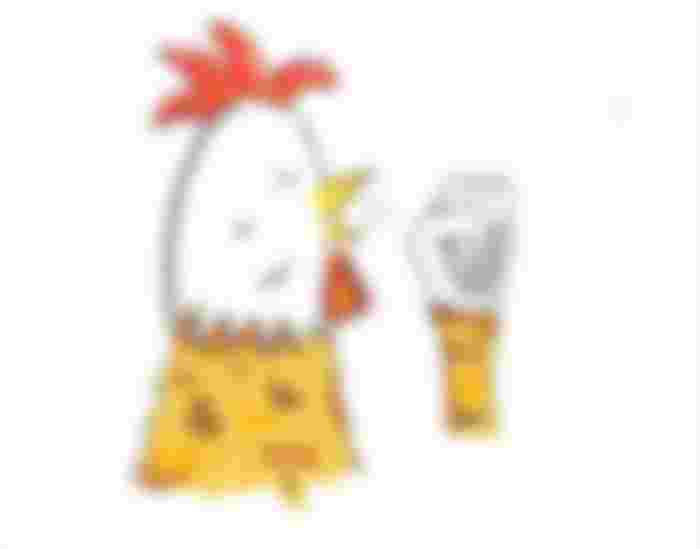The nature of life is such that we are each free to decide upon individual beliefs that define and shape our experience. Whilst no concept is any more authentic or imaginary, pure or evil, mature or naive, I personally believe that the idea or set of ideas that provide the most effective foundation for the generation of joy, love and freedom are the ideas best followed. And it is this belief — that Life is a game — that has led to an immeasurable accumulation of joy, love and freedom in my life.
You’re inside a video game.
It’s called Life: the most immersive, hyper-realistic role-playing game ever conceived.
There are many different ways in which we play this game. Unfortunately, many are so caught up in its exquisite realism, swallowed up by the day-to-day issues of their lives, that they take the Game of Life all too seriously. Ultimately leading to in-game sickness and suffering.

Thankfully, in order to start enjoying one’s game again, all that’s required is a slight shift in perspective.
The Purpose of Life
Why do you think we’re here? Do you believe we’re simply the product of happenstance, an accidental race of bipedal creatures here simply to eat and reproduce? Or are you here to make something of yourself? Or something more, perhaps that we’re all here with a divine mission to fulfil, to assist our fellow man and further his joy — a soul mission?
Whilst these are all plausible explanations, with a bit of thought one realises that they are all ultimately derived from the 21st century’s cardinal virtue: Progress. Fundamentally, these reasons for being all postpone life.

Existence is thus reduced to a mechanical means to an end — getting from here, to there.
To go beyond the ideas of our cultural evolution one would have to examine some of the basic principles of life, rather than relying on stories or concepts propagated by society, religions and corporations.
In order to understand the purpose of life, we must first understand ourselves.
The Players
Wherever you are is your here, and whenever you’re reading this is your now. The cognition of this here and now reality is made possible by the function of your essence — the foundational aspect of The Player.
This is Consciousness.
Consciousness, also known as awareness, is That which enables the sensation of a body to be felt, the thoughts of a mind to be heard and the pickings of the senses to be received. In other words, our awareness is our in-game interface and enables access and interaction with the Game World.
Using the analogy of another self-aware being wearing a virtual reality headset, playing the Game of Life as you, the data of what you think is your body and mind is simply that — data. This data is then fed into the awareness of the player behind the mask. Here, the player is Consciousness — the awareness of the experience of playing.

The awareness of the moment to moment changes to the energetic manifestation that we call “reality,” including seemingly internalised phenomena such as thought and the sensation of having a body — your in-game here and now — this is You.
The Illusion of “Reality”
Almost universally, life on Planet Earth is considered as the one true “reality”; the existential bedrock upon which all other experience has its foundation. Other occurrences like dreams, psychedelic trips and near-death experiences are seen as secondary happenings that ultimately relate back to this earthly dimension.
Characteristic to all experiential occurrences, however, is the belief that the occurrence currently animated within the field of your consciousness is real. But is a dream any more or less real than wakefulness?
In fact, the only substantiating quality to this dimension is the mutual agreement among its participants that there must be a foundational dimension, a reality. And that this is it.
Certain characteristics woven into this worldly experience — such as continuity (waking up to find things as they were), the “laws of physics”, the existence of suffering and pain, and so on — are mistakenly viewed as evidence for the realness of this dimension.
Alternatively, all the aspects associated with this existential realm can be seen as nothing more than the parameters and mechanics necessary to create the conditions and depth of narrative of this Game World — a dimension inhabited by consciousness, neither more or less real than any other.
Avatar & Onboard Assistant
Our consciousness is the “energy” that animates our in-game experience, like the electricity passing through the allegorical VR headset.
In addition to this existential power source, we are each provided with an avatar with which to navigate the game world (a body), and an in-built biocomputer (the mind) acting as our onboard assistant.
Our in-game experience is created with the avatar and assistant working in tandem. The combined product of the both of these is then relayed upon the screen of our awareness.
Often referred to as our rational mind, the onboard assistant processes the incoming data of the game world, singling out certain aspects based upon all previous programming. The bulk of this programming is coded into the assistant during the earlier stage of the game. This we call childhood conditioning; infantile programming. In the later stages of the game, the player is free to code his biocomputer in whichever way he chooses. Because of this, every player’s game world is an individual creation — as serious or game-like as the beliefs with which his on-board assistant is programmed.
The incoming data selected by the assistant is then augmented by the systems of the avatar. Conventionally, the system that enables the richness of our in-game experience is known as the limbic system — the feeling centre of our biocomputers. Due to this system, the Game of Life is given an extra depth, usually referred to as Emotion.
The cool thing about the avatar and on-board assistant is that they are both input responsive, meaning that the bio-material and code that we supply and program them with respectively alters their composition and performance.

In-Game Objective
Obviously, the purpose of any game is to enjoy playing it. In the Game of Life, we maximise enjoyment as we increase our capacity to view each moment in its true form: an experience perceived by Consciousness.
Consciousness cannot tire, it cannot be damaged, maimed or corrupted. Consciousness is eternal and untouchable, impervious to even the darkest subjective experience. Therein, the shift in perspective required is simply to derive one’s sense of self as That which permits the “experience of experiencing”.
By identifying yourself solely with your awareness, you are free to enjoy every aspect of the great Game of Life — the ups, the downs, the successes, the screw-ups, glorification, mortification, the drama, the stench, the heartbreak and the painful profundity of all life — safe in the knowledge that you’re here for no other reason than to experience it all. To play. To have fun.
And nothing more!

Header painting by TrixiYateeArt
All other images by me.





This life itself is a game. It is now left for you on how you are going to play it in other for you not to miss the game. That is, in other not to start begging in life.